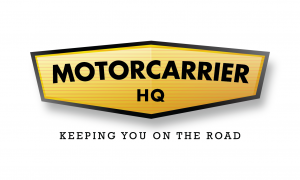November 11, 2023
How to Pass a DOT Safety Audit

When you’re running a trucking company, one of the most important ways to do business is to be prepared for audits, especially since you don’t always have control over when they could come your way.
The U.S. Department of Transportation safety audit is one of the big ones. Fortunately, you’re likely to pass the audit if you’re in the habit of keeping good business records. Here’s a breakdown of what you need to know about this topic so you can be better prepared in the future.
What Does a Safety Audit Entail?
A safety audit is when the DOT reviews your records to make sure you’re complying with industry regulations. This can include general recordkeeping ‘to dos’ as well as hazardous material regulations. Basically, they need to know your business takes the right measures to operate safely.
If you’re a new motor carrier, this type of audit needs to take place within the first 12 months of business. After that, another checkup can happen anytime in your career. The goal? Your records are so complete that you don’t have to update them to comply with the audit. It also means never ignoring an audit.
Maintaining and organizing your records will help you fulfill about 90% of the audit requirements. (Good record keeping also helps you out for the New Entrant Audit, which is different from the Safety Audit and is meant to help educate new carriers to follow regulations.) As long as you keep good records, you’ll be ready for this audit. Prevention is the best tool here.
How to Prepare For the DOT Audit
Federal compliance is part of your business’ success. To pass a safety audit, you’ll need certain things in and around your truck as well as qualifying driver information and proof of your drug and alcohol protocols. You can find a free, downloadable list of these items from the Motor Carrier HQ site.
As this Motor Carrier blog post lays out, there are other questions you need to ask yourself as you work to comply with federal regulations:
- Did you establish yourself with the correct trucking authority?
- Did you pass the New Entrant Audit Safety exam? If not, have you scheduled one?
- Is your motor carrier business registered (under the Unified Carrier Registration)?
- Have you secured apportioned plates? (Here’s a Motor Carrier HQ guide on how to do that).
- Did you successfully register for an IFTA (International Fuel Tax Agreement) licsense, if you need one?
- Can you confirm if your records are up-to-date and your records system is working?
Three Categories Your Records Will Fall Into for a Safety Audit
A record review or request will include looking at equipment maintenance records, employment applications, copies of CDLs, receipts and bills, driver information, and your hours of service records.
Each of these records lands in a safety audit category. The three categories you need to care about are as follows: company-specific information, driver-specific information, and equipment-specific information. Here is a breakdown of each category.
Company-specific information
These records are anything that has to do with your company. This includes an accident log, insurance records, drug and alcohol program information, your consortium membership, and International Fuel Tax Agreement (IFTA) records.
Driver-specific information
This is the big one – it makes sure your driver is qualified to drive a commercial vehicle and you need to pull this information every year. It includes records such as each driver’s personal information, general employee file, and their yearly motor vehicle records.
Equipment-specific information
For this category, you need to keep paper or electronic receipts and records of each truck repair or maintenance. For example, keep records that show when you bought a new piece of equipment or added another truck to the fleet. As long as you have a complete list of specific inventory that you use and a way to show you fix outstanding issues (i.e., new tires, trailer brakes), you’ll be good.
The DOT conducts safety audits either off-site (electronically) or onsite (in person):
- Off-site audit: This type of audit isn’t considered overly intrusive – you mainly upload documents that prove your compliance. However, if the DOT notices you don’t have all the documentation they asked for or they find other issues, it’s likely they will change your off-site audit to an onsite audit.
- Onsite audit: This audit is more in-depth since it takes place in person. You’ll need easy access to all records (paper or digital) so the DOT can quickly get answers to their audit questions. The DOT will set up an appointment with you to start and you’ll know how in-depth the audit will go once the audit starts.
The 16 Ways You Will Fail a Safety Audit
There are sixteen things the DOT considers as automatic audit failures. Here they are:
- You don’t have a drug and alcohol testing program.
- You don’t include random testing in your drug and alcohol program.
- You use a driver who refused to take a drug and alcohol test.
- You use a driver that has a 0.04 or greater alcohol content level to perform any safety function.
- You use a driver that failed a drug or alcohol test.
- You hire a driver who doesn’t have a CDL license.
- You use a driver who has a suspended or disqualified license.
- You knowingly use a driver who is not allowed to drive a commercial vehicle.
- You operate a motor vehicle without proper insurance coverage.
- You operate a passenger vehicle without proper insurance coverage.
- You knowingly use a disqualified driver.
- You knowingly use a driver who isn’t physically qualified.
- You don’t require your drivers to record their duty status.
- You operate a commercial vehicle that has already been placed out of service (often for a safety issue or if you’ve already exceeded your drive time).
- You don’t fix equipment issues or defects.
- You don’t get regular/annual safety inspections on your commercial motor vehicle.
If you pass the audit, nothing will be different in terms of how you do business. However, if you fail, you’ll get a notice that says you violated regulations and it will detail which category/categories you failed.
More ‘severe violation’ audits will require you to take more steps to resolve issues. Keep in mind that violations can include a penalty or fine (often called a Notice of Claim). You can check out Episode 42 from the Haulin Assets podcast to hear more details on what a severe audit looks like.
Motor Carrier HQ makes it easy for you to comply with safety audits by offering the Audit Assistance Package, complete with the forms and instructions you need – all in one spot. The company developed this package after hearing about clients’ issues preparing for safety audits and asked auditors in Utah for their input to make sure everything was included. This system organizes each item for the client and takes the guesswork out of what you need to include.


